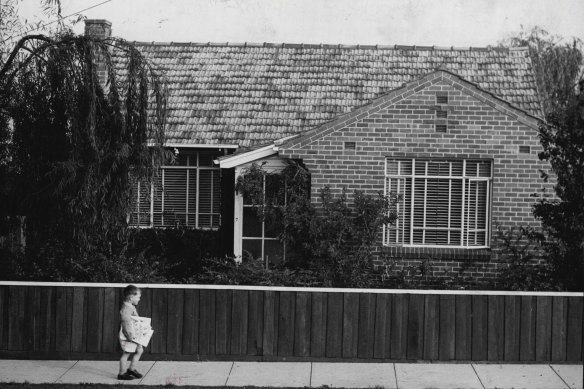Australia is experiencing a housing disaster. There are too few affordable dwellings to buy or rent. Housing affordability in 2024 is the worst on record. Social housing has been run down for decades. Over 120,000 people are living with homelessness. Particularly affected are First Peoples experiencing the continuing impact of colonisation, women with children fleeing domestic violence, people living with mental illness and low-income older people, especially older women. Over multiple generations, a large proportion of the population is anxious about their housing, especially the young and those on low-middle incomes who face insecure or poor housing for life. Housing anxiety is why the “Great Australian Dream” is now frequently called the “Great Australian Nightmare”.
The baby-boomer generation, including myself, grew up in a very different era. I was born in 1954 to young parents who had eight children. Hundreds of thousands of houses were built by government that low-middle income families like ours could afford to rent or buy. We rented a basic three-bedroom weatherboard house from the Victorian Housing Commission in Moorabbin. Fittingly, in the language of the Bunurong/Boon Wurrung, “Moorabbin” means “resting place” or “mother’s milk”. My mother’s parents joined us in a bungalow built for a song in the backyard. As I grew older, it was my job to take the rent to the commission office just down the road. When government policy changed to allow sitting tenants to buy their homes at concessional prices, my parents did so, although they still called the money I took to the same office rent. I owe my family upbringing to social housing which working people like my parents could not now possibly get.

The Victorian Housing Commission built estates across Mebourne.Credit: Fairfax Media
Australia supports the Sustainable Development Goals adopted by the General Assembly of the United Nations in 2015 as an international plan of action to end poverty and to promote peace, prosperity and economically sustainable development. These goals “seek to realise the human rights of all”. Goal 11 is: “Make cities and human settlements inclusive, safe, resilient and sustainable.” The first target for that goal is: “By 2030, ensure access to all to adequate, safe and affordable housing and basic services.” Australia is not on target to meet this goal.
No future generation should have to live through a housing disaster like this. It has come from a system failure in which profit has been put before people. Housing has become primarily a commodity for investment. Governments have neglected their fundamental obligation to realise everyone’s human right to housing and home as the foundation of their personal, social and economic life. In Australia, government and policymakers tend not to think about housing in terms of human rights or they just mention them. Money and economics are the main frame or reference. This must change. Human rights are absolutely fundamental and must be taken seriously. What is needed is a shift in the values underpinning the housing system towards recognising a decent home as “The Great Australian Right”. Realisation of this right for everybody should be the primary purpose of the system; a legislative, rights-based national housing strategy is needed to bring this about.
The housing disaster in Australia affects all four parts of the system. The first is homeownership and, fair enough, it is the form of home that most people prefer. The trouble is that we have set up a system in which homeownership is out of reach for increasing numbers of people. This means that more and more are having to rely on the second part – private rental housing – for their home. But rents have skyrocketed so high that very few affordable dwellings are available and residential tenancy laws in most parts of Australia provide weak protection for tenants. Renting is seen to be second-class this country, and therefore we tolerate second-class legal protection. It is different in other countries where renting is seen to be one way of having a decent home and therefore gets decent legal protection.
Australians tend to see homeownership as the ideal.Credit: Oscar Colman
You would think that the third part – social housing – would provide a safety net for ordinary people who can’t afford homeownership or private renting. Unfortunately, this is not how things now work. You have to be in a really dire situation to get social housing, which means (for example) being on government income support and having special needs. If you can’t get housing at all, you confront the fourth part of the system – homelessness – which exists at alarming and increasing levels in this so-called lucky country of plenty. The worst affected are First Peoples among whom the rate of homelessness are many times greater than other groups. Homelessness is an assault on human dignity, social inclusion and the right to life, and an impediment to First Peoples realising self-determination. It is evidence that national housing policy is failing because homelessness is caused by structural factures of the system as a whole for which government is responsible. We all but solved homelessness during the COVID years. Why not now?
Renting is seen to be second-class this country, and therefore we tolerate second-class legal protection.Credit: Chris Hopkins
We are experiencing not only a socio-economic disaster. It is a human rights disaster. Decent housing is a pillar of the whole system of human rights. When the right to a decent home is put at risk or violated on a large scale, as it now is, this impacts a great many other rights. These other rights potentially include the right life, the right to health including mental health, the right to personal inviolability including the right of women to be safe in their own home, the right to be free of discrimination, the right to work a reasonable distance from home, and the right to be free of the many gross human rights violations that are associated with poverty, inequality of wealth, social exclusion and homelessness.